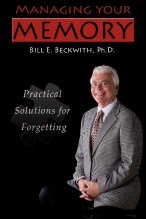Molding the Environment to Fit the Client
It’s interesting how we ignore the obvious. The latest article from the New York Times series, “The Vanishing Mind,” focuses on treatment for advanced Alzheimer’s disease. The title of the series has it wrong. The mind does not vanish. Rather it becomes limited and inflexible. As Alzheimer’s progresses, the client (yes, even those with severe cognitive decline are our clients and deserve to be treated as such) becomes unable to adapt to the environment. The environment must be adapted to the client – personalized care. We don’t expect more of children than they are capable and mold their environment to meet their competence but we don’t give those with Alzheimer’s the same courtesy. We expect them to adapt to our convenience and needs. I have often said that if I have to go to a facility, don’t make me play bingo. I don’t like bingo. Instead, give me a cat and open access to pumpkin pie and strawberry short cake.
I was recently talking to a spouse, whose partner is in a facility. She pointed out that he goes to bed very late and rises in the afternoon. Rather than listening, the first strategy was to try to fit him to the program they had. They tried waking him to get to breakfast. When that failed, they tried medications to make him sleep through the night in the hope that he would “adjust” to their schedule. Unfortunately, this started a power struggle and everyone lost. He became more confused and agitated on several different medications.
A better approach would be to discuss with his wife his patterns. An individualized program would have allowed him to sleep on his schedule. If he rises at noon, that works for him. The facility has staff 24/7 and can accommodate the client. There is no logical reason for him to eat breakfast at 8AM or to be dressed and ready to go to an activity by 10. The treatment for many “difficult” clients is obvious, but inconvenient for rigidly-planned scheduling. Creative therapy is based on the retained patterns, behaviors, skills, and interests of the client. Take the client to what he or she likes to do.
A number of years ago, I had an interesting client who had this concept mastered by just going with the flow. By usual standards his wife could no longer golf despite the fact that she loved to golf. When they golfed, he placed the ball on the tee, pointed her in the direction of the flag, gave her a club, and told her to swing. Whether she missed the ball or not, he said “great swing.” He then hit his ball and repeated the same sequence with her after he dropped her ball next to his. When asked about golfing, she gave a bright smile and cooed with joy as she had little expressive language any longer.
Personalized therapy for Alzheimer’s is right under our nose. Productivity is more important than competence. We need to stop the power struggles. We need to understand the client and serve his or her needs.




